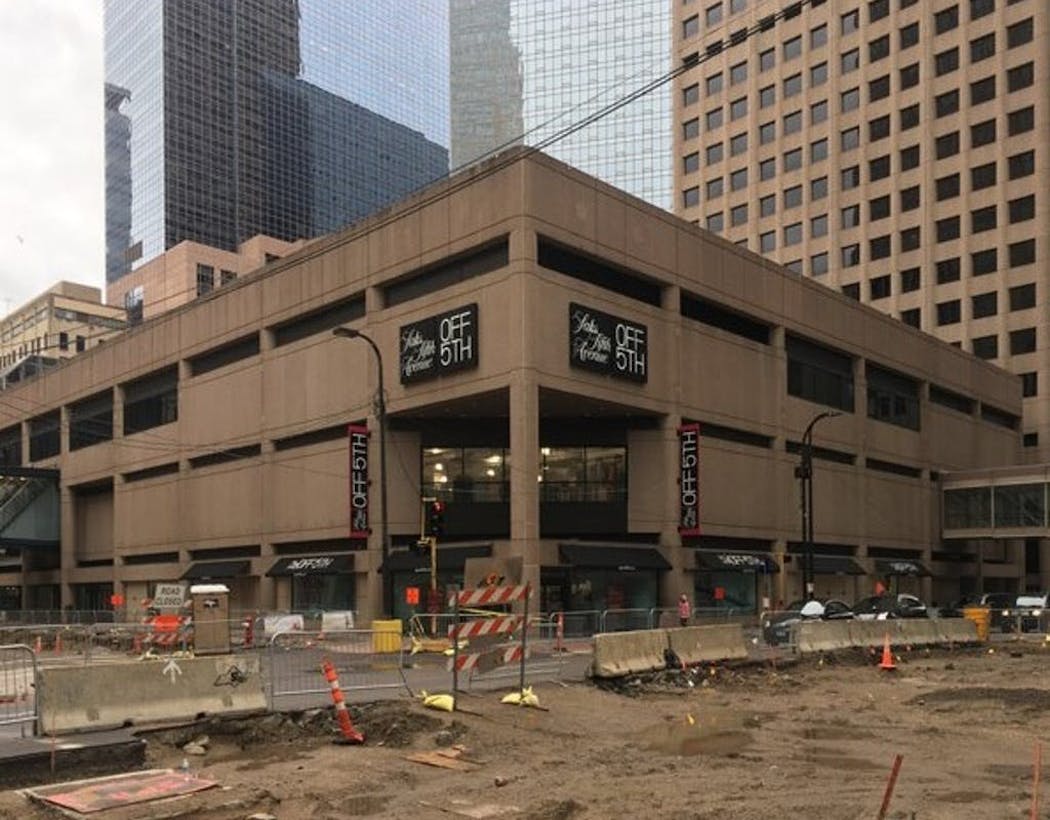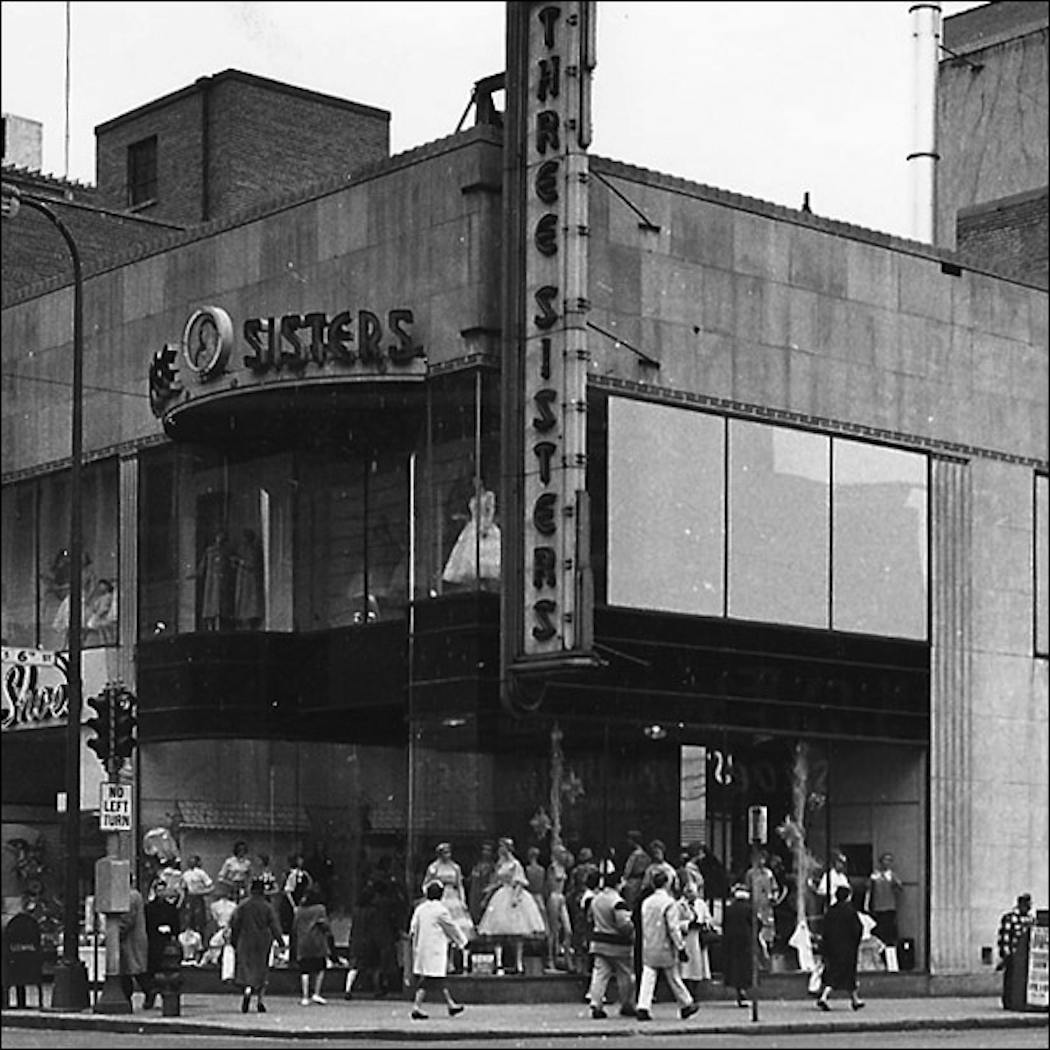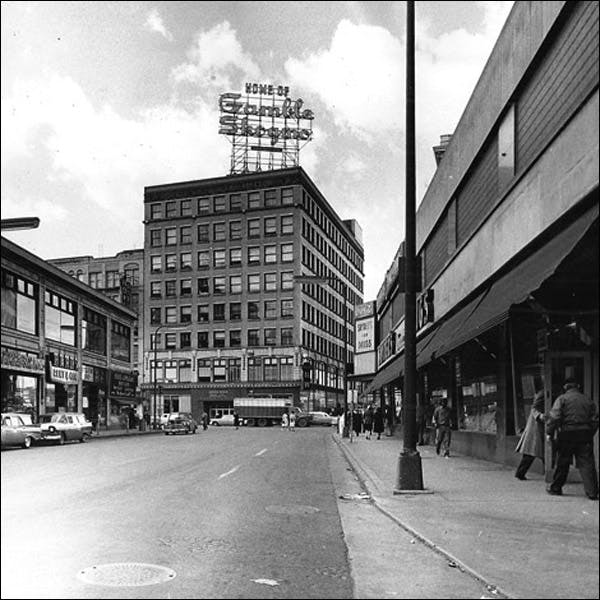In the summer of 1960, the Star Tribune sent photographers to snap a shot of every corner in downtown Minneapolis. This is the second installment in a series that takes a closer look at the pictures, and passes on a few pieces of Minneapolis history.
This 1960 Downtown Survey project was a look at the days when you could buy almost anything you wanted on Nicollet Avenue. Here's the intersection of Nicollet and 6th. Don't look for anything familiar. It's all gone.
Let's take a look to the right.
Juster's is gone now, but when this picture was taken it was more than 50 years old. P. B. Justers started selling suits in 1908 in the Dakotas, and moved to Minneapolis in 1914. Their downtown headquarters looks impressive in this picture, and no doubt they regarded themselves as a downtown fixture.
Just be safe, though, they'd already expanded to Southdale.
The Dyckman was one of downtown's grand hotels -- lavish for 1910 when it checked in its first guest, tired and outdated after half a century. The Chateau de Paris was still a destination restaurant for anniversary dinners, but it was doomed by the City Center project, and joined the Radisson and Andrews hotel in the grave of bygone hostels. Demolished in 1979.
The Juster's building, you'll note had its lower floor modernized. Under the stone might have been an interesting piece of old Minneapolis architecture:
An atelier with a big glass window. An artist's studio, perhaps?
On the corner:
Three Sisters was a chain of women's apparel stores, and it seems to have left no history. Google it, and you'll get pictures of old storefronts, or obituaries of ladies who worked there.
Zoom in on the corner, and you'll see the interior of the store and its displays.
The rest of the block has two old retail rivals:
S. S. Kresge, and W. T. Grant. (Burt's Shoes was stuck in between them, perhaps to keep the peace. Kresge was a variety store familiar to downtowns large and small, but the post-war rise of suburban retail bit hard. The company fought back with a new type of store you might know: they called the concept "KMart."
W. T. Grant, based in Massachusetts, had their own KMart model, called "Grant City." Didn't catch on. Grant entered super-huge fatal bankruptcy in 1976, the second largest in U.S. history. one of the causes for their failure was loose credit: they let anyone charge anything, and they kept poor records.
Wikipedia lends this detail: "The credit was recovered in 1976 by Irwin Jacobs who, with the backing of Carl Pohlad, purchased their consumer accounts receivable account of $276.3 million for $44 million."
You wonder if Irwin or Carl went to the store in their youth, and thought: some day all these bad debts will be mine.
The site today:
Star Tribune file
What once was a block full of windows full of goods, facades old and new, neon signs, and mixed use is now ...
Well, it's City Center. Nothing more needs to be said.
Live video of man who set himself on fire outside court proves challenging for news organizations








